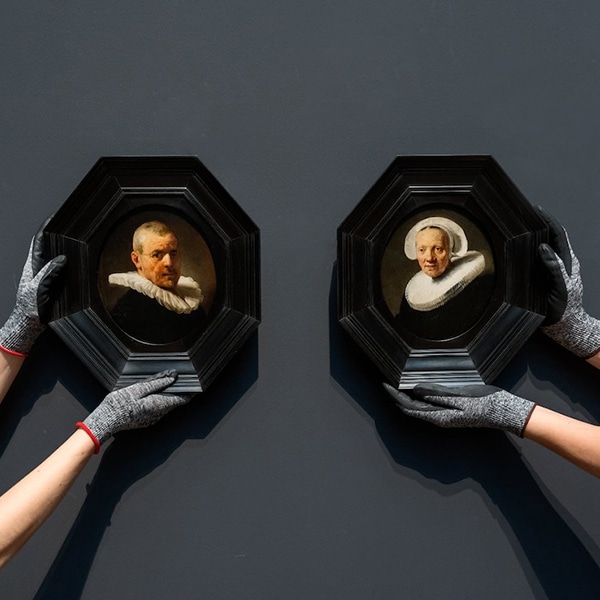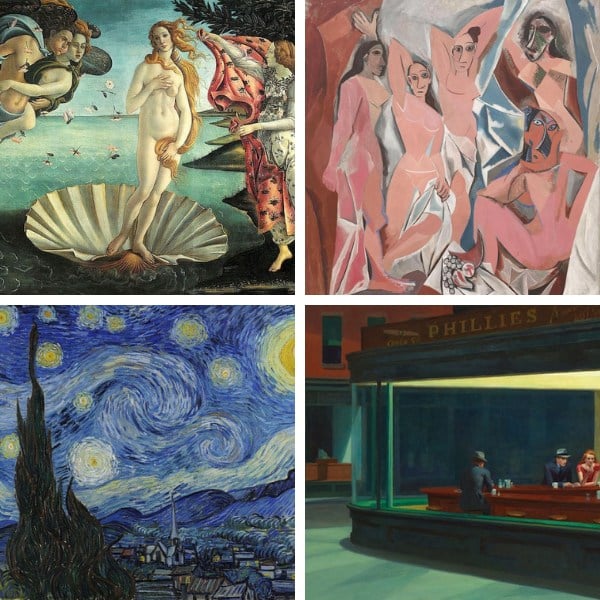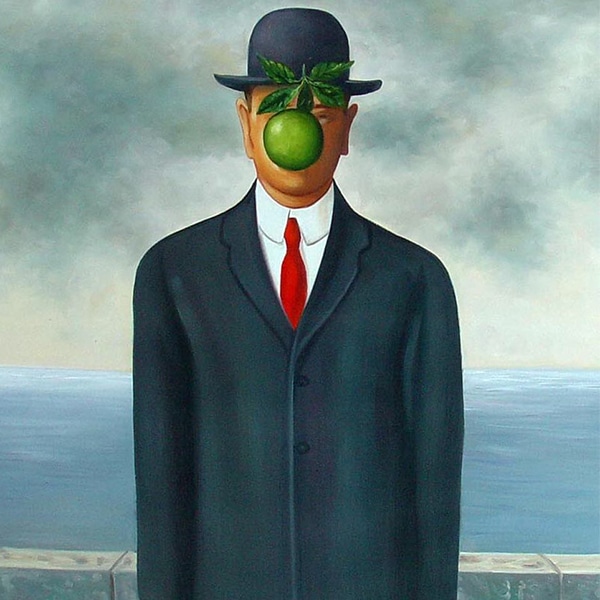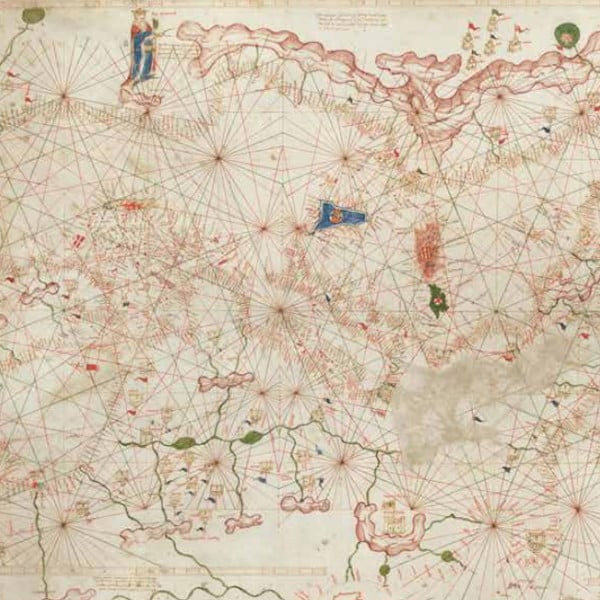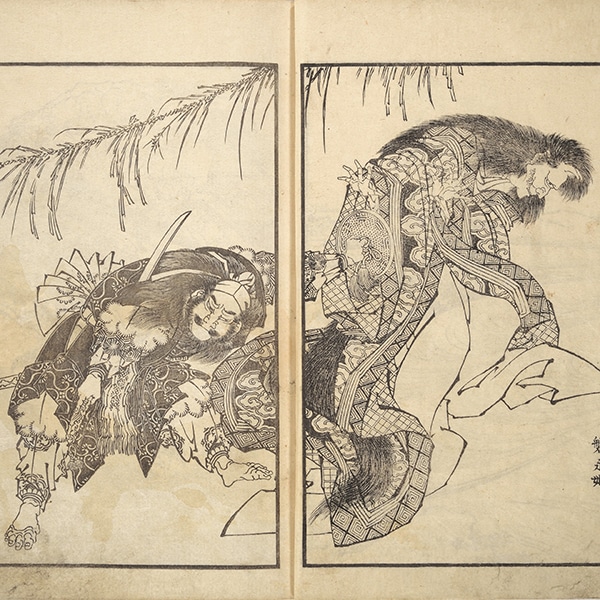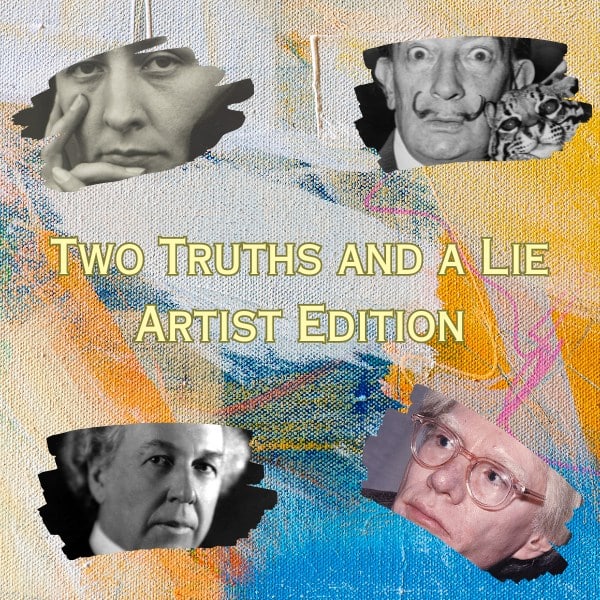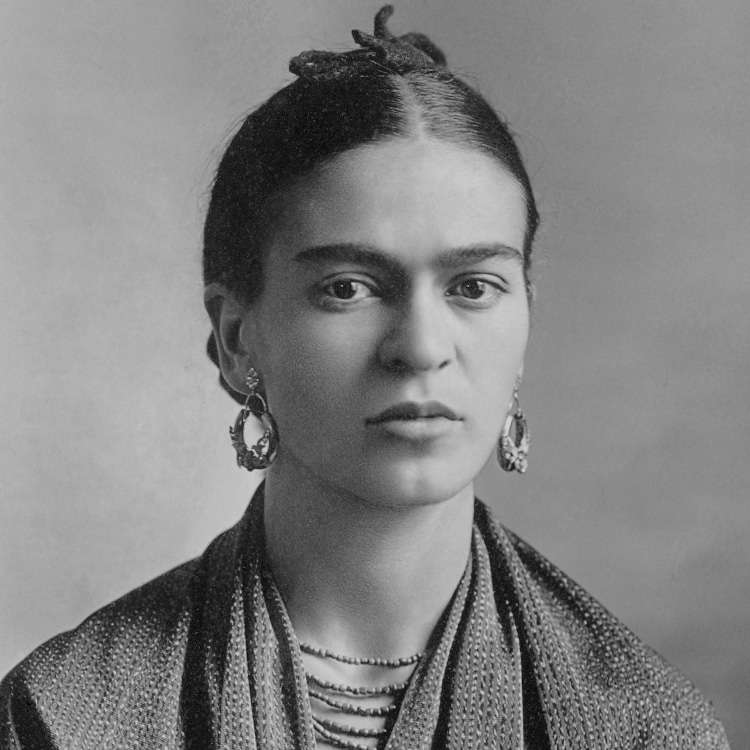
Frida photographed by her father, Guillermo Kahlo, in 1932. (Photo: Guillermo Kahlo via Wikimedia Commons, Public domain)
Mexican painter Frida Kahlo is renowned for her symbolic subject matter, colorful canvases, and extensive series of self-portraits. Inspired by “whatever passes through [her] head without any other consideration,” her paintings are deeply personal. Given the intimate and emblematic nature of her pieces, their messages and motifs may seem too obscure to interpret. When viewed through a contextual lens, however, the meanings behind her poignant paintings begin to materialize.
Kahlo explores several themes in her oeuvre, from an interest in her ancestry and heritage to her struggles with childlessness and femininity. Her most well-known paintings, however, seem to revolve around two major events in her life: her traumatic divorce from fellow artist Diego Rivera, and a nearly fatal accident she survived as a teenager. Here, we contextualize seven of her most famous paintings in order to grasp the themes, thoughts, and emotions behind them.
Full Name | Magdalena Carmen Frida Kahlo y Calderón |
Born | July 6, 1907 (Coyoacán, Mexico City, Mexico) |
Died | July 13, 1954 (Coyoacán, Mexico City, Mexico) |
Notable Artwork | The Two Fridas |
Movement | Surrealism, Magic Realism |
Learn about 10 famous Frida Kahlo paintings.
Self-Portrait with Thorn Necklace and Hummingbird
Ver esta publicación en Instagram
Title | Autorretrato con collar de espinas y colibrí (Self-Portrait with Thorn Necklace and Hummingbird) |
Artist | Frida Kahlo |
Year | 1940 |
Medium | Oil on canvas |
Size | 24.11 in × 18.5 in (61.25 cm × 47 cm) |
Location | Harry Ransom Center (Austin, Texas) |
Throughout the course of her career, Kahlo painted 55 portrayals of herself, including Self-Portrait with Thorn Necklace and Hummingbird. Today, this piece remains one of her most widely-recognized self-portraits, due to the moving context in which it was created and the symbolic nature of its imagery.
Kahlo completed this piece in 1940, one year after her tumultuous divorce from Mexican muralist Diego Rivera. Given the timing of its creation, Self-Portrait with Thorn Necklace and Hummingbird is widely believed to be a reflection of her emotional state following the couple's split.
In the painting, Kahlo is positioned in front of foliage and between a stalking panther and a monkey. (She and Rivera had kept many monkeys as pets, leading many to speculate that they served as surrogates for the children the couple was tragically unable to conceive.) Around her neck, she wears a necklace made out of thorns and adorned with a seemingly lifeless hummingbird. Though the peculiar accessory draws blood from her neck, her expression remains stoic. This calm approach to pain is typical of Kahlo, who—even when devastated over her divorce—poignantly stated that “at the end of the day, we can endure much more than we think we can.”
The Two Fridas
Ver esta publicación en Instagram
Title | Las dos Fridas (The Two Fridas) |
Artist | Frida Kahlo |
Year | 1939 |
Medium | Oil on canvas |
Size | 68.3 in × 68 in (173.5 cm × 173 cm) |
Location | Museo de Arte Moderno (Mexico City, Mexico) |
Like Self-Portrait with Thorn Necklace and Hummingbird, The Two Fridas was painted in response to Kahlo's separation from Rivera. In this piece, Kahlo explores two sides of herself. On the left, she depicts herself as a broken-hearted woman clad in a traditionally European gown. On the right, her heart is whole, and she is wearing a modern Mexican dress—a style she adopted while married to Rivera.
As they share a bench, the two Fridas hold hands. This embrace, however, is not all that connects them; from their hearts sprouts a single vein, which branches out and wraps around their arms. On the left, Frida cuts the vein with surgical scissors, causing it to bleed. On the right, the vein leads to a tiny portrait of Rivera, clutched by Frida and nearly invisible to the unobservant eye.
This unique self-portrait likely represents the inner identity struggle faced by Kahlo as she dealt with her divorce. Though it seems to nod to the work of the surrealists, Kahlo insisted that such iconography was rooted in real-life and, therefore, a direct reflection of her persona. “I never paint dreams or nightmares,” she explained. “I paint my own reality.”
Self Portrait with Cropped Hair
Ver esta publicación en Instagram
Title | Autorretrato en la frontera entre México y Estados Unidos (Self-Portrait on the Borderline Between Mexico and the United States) |
Artist | Frida Kahlo |
Year | 1932 |
Medium | Oil on metal |
Size | 12.5 in x 13.75 in (31 cm x 35 cm) |
Location | María & Manuel Reyero's private collection |
Following her divorce, Kahlo sought to reinvent herself. In an act of defiance against her ex-husband, she painted Self Portrait with Cropped Hair.
Seated on a bright yellow chair with scissors in hand and locks of hair surrounding her, the artist is shown with a short haircut and clad in a man's suit. Above her floats a pertinent lyric from a Mexican folk song. When translated, it reads: “Look, if I loved you it was because of your hair. Now that you are without hair, I don't love you anymore.”
Clearly, Kahlo's androgynous approach to her appearance in Self Portrait with Cropped Hair is a far cry from the long hair, flowing dresses, and feminine jewelry exhibited in most depictions of her. Fascinatingly, however, this is not the first time she has experimented with a masculine look. In photos of the artist as a child and teenager, it is apparent that she often wore suits—even when her female friends and family retained a more “feminine” appearance.
Self-Portrait on the Borderline Between Mexico and the United States
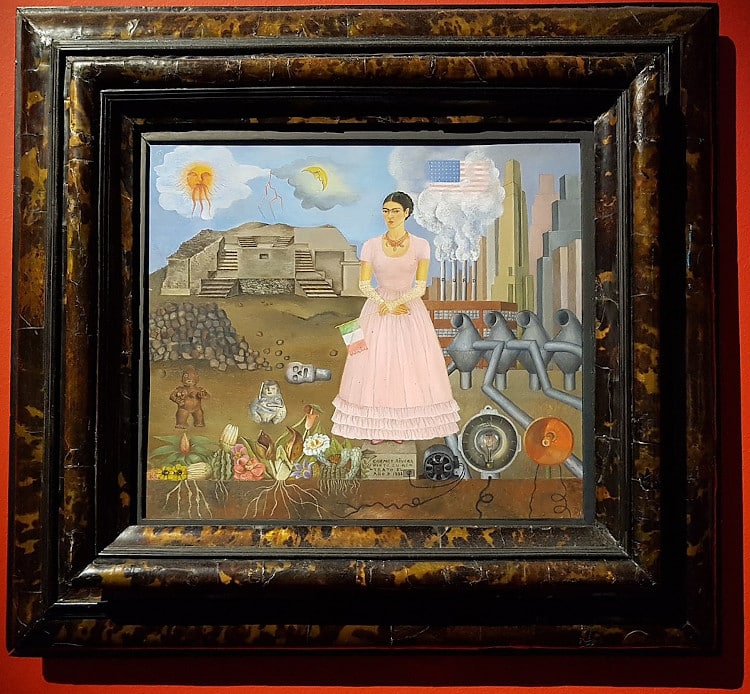
Photo: Ambra75 via Wikimedia Commons (CC BY-SA 4.0)
Title | Autorretrato en la frontera entre México y Estados Unidos (Self-Portrait on the Borderline Between Mexico and the United States) |
Artist | Frida Kahlo |
Year | 1932 |
Medium | Oil on metal |
Size | 12.5 in x 13.75 in (31 cm x 35 cm) |
Location | María & Manuel Reyero's private collection |
Kahlo and Rivera lived in America for a period of four years, between 1930–1934. While her husband thrived in the limelight and found great success among artistic circles—including an exhibition at the Museum of Modern Art in New York—, Kahlo experienced many hardships, including failed pregnancies. Self-Portrait on the Borderline Between Mexico and the United States depicts Kahlo's dislike for the industrial and capitalist culture of the U.S. as well as her longing for the agrarian lifestyle of Mexico.
On the right is a simplified portrayal of Detroit—one of the cities in which she and River lived—which is made up of tall skyscrapers and a manufacturing plant producing plumes of smoke. On the left is an illustration of Mexico, featuring plants, vegetables, ancient statues, a skull, and temple ruins in the background. Although Kahlo was deeply unhappy during this period, she grew considerably as an artist and was able to experiment in different mediums.
Henry Ford Hospital
Ver esta publicación en Instagram
Title | Hospital Henry Ford Hospital (Henry Ford Hospital) |
Artist | Frida Kahlo |
Year | 1932 |
Medium | Oil on metal |
Size | 12 in x 15 in (30.5 cm x 38 cm) |
Location | Museo Dolores Olmedo (Mexico City, Mexico) |
One of Kahlo's most heartbreaking paintings, Henry Ford Hospital depicts her convalescence at the Henry Ford Hospital in Detroit after suffering a miscarriage. A series of red veins sprout from her belly and connect her to key elements of what she was going through—a fetus, referencing her unborn child; her pelvis, damaged from the streetcar accident; an orchid that Rivera gifted her during her stay at the hospital; a snail to represent how days went slowly for her; and a machine, tying her to the industrial spirit of the city where she was at the time.
My Grandparents, My parents, and I (Family Tree)
View this post on Instagram
Title | Mis abuelos, mis padres y yo (My Grandparents, My Parents, and I) |
Artist | Frida Kahlo |
Year | 1936 |
Medium | Oil and tempera on zinc |
Size | 12.125 in x 13.625 in (30.7 cm x 34.5 cm) |
Location | Museum of Modern Art (New York City, New York) |
My Grandparents, My Parents, and I is one of two family tree paintings Kahlo ever created. It documents her mixed-race heritage, with her Mexican mother and Mexican maternal grandparents on the left, and her German father and German grandparents on the right. Kahlo includes a depiction of herself as a young child standing at the center and holding the ribbon that ties all of these figures together.
The Broken Column
Ver esta publicación en Instagram
Title | La columna rota (The Broken Column) |
Artist | Frida Kahlo |
Year | 1944 |
Medium | Oil on masonite |
Size | 15.7 in × 12.0 in (39.8 cm × 30.6 cm) |
Location | Museo Dolores Olmedo (Mexico City, Mexico) |
“There have been two great accidents in my life. One was the train, the other was Diego. Diego was by far the worst.” In 1925, 18-year-old Kahlo was involved in a streetcar accident that left her with a broken spinal column, among many other major injuries. “A man saw me having a tremendous hemorrhage. He carried me and put me on a billiard table until the Red Cross [ambulance] came for me.” In Broken Column, Kahlo presents a tragic glimpse into the lifelong effects of the accident.
The painting depicts Kahlo after spinal surgery. Nude except for a hospital sheet and a metal and plaster corset, her body is pierced with nails (perhaps as an allusion to Christian iconography of Christ on the cross)—and is shown split open. Visible in the crack that bisects her body is a crumbling Ionic column, which has replaced her spine and symbolizes her broken body. In the background, a barren landscape is similarly fissured, and a stormy sky looms overhead.
The Bus
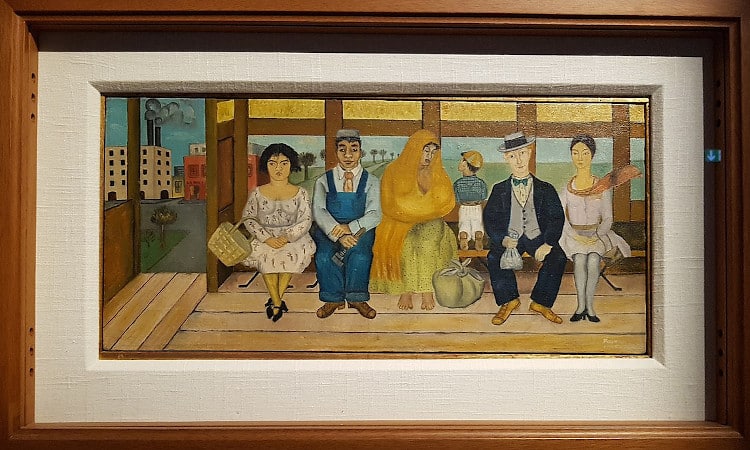
Photo: Ambra75 via Wikimedia Commons (CC BY-SA 4.0)
Title | El camión (The Bus) |
Artist | Frida Kahlo |
Year | 1929 |
Medium | Oil on canvas |
Size | 10 in × 22 in (25.4 cm × 55.8 cm) |
Location | Museo Dolores Olmedo (Mexico City, Mexico) |
In 1929, Kahlo painted The Bus, a depiction that recalls what she had seen moments before the life-altering bus accident, which took place four years earlier. The piece is one of her closest encounters with realism, as opposed to the more surrealistic compositions of her most famous paintings.
On September 17, 1925, Kahlo was returning home after a day at the National Preparatory School. “I was an intelligent young girl, but impractical, in spite of all the freedom I had won. Perhaps for this reason, I did not assess the situation nor did I guess the kind of wounds I had,” Kahlo recalled.
She never depicted the actual accident in her work, but Kahlo's painting shows us how calm and common everything looked as this bus traversed the streets of Mexico City, and how transit brought together people from all walks of life—workers, an Indigenous woman with her child, and a middle class couple sitting across from Kahlo's point of view.
Self-Portrait as a Tehuana
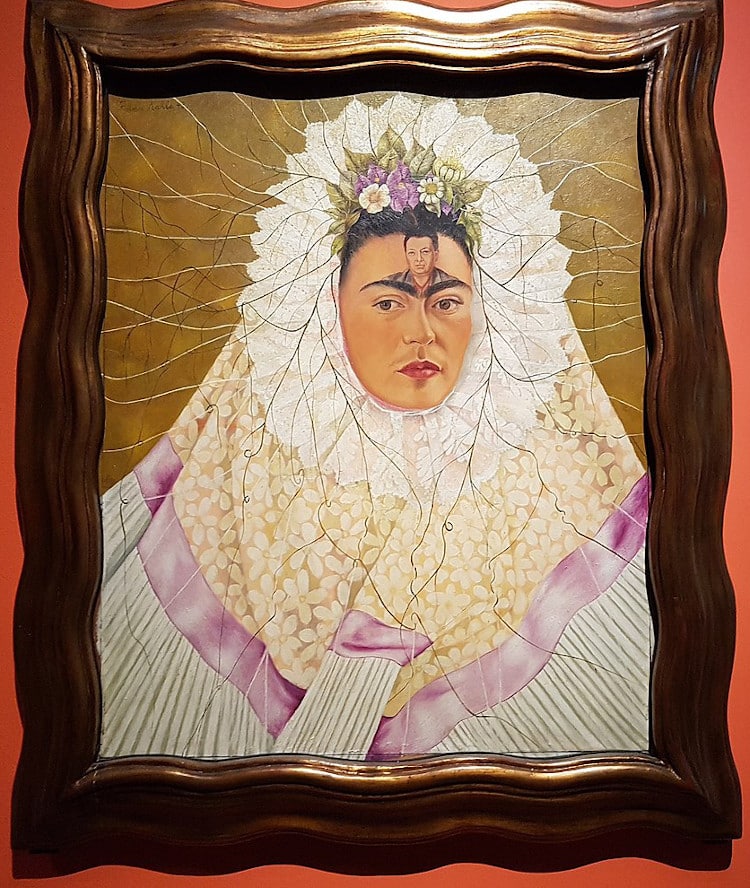
Photo: Ambra75 via Wikimedia Commons (CC BY-SA 4.0)
Title | Autorretrato como tehuana (Self-Portrait as a Tehuana) |
Artist | Frida Kahlo |
Year | 1943 |
Medium | Oil on Masonite |
Size | 29.9 in x 24 in (75.9 cm x 61 cm) |
Location | Jacques and Natasha Gelman's private collection (Mexico City, Mexico) |
One of her most famous artworks, Self-Portrait as a Tehuana—also known as Diego on My Mind—shows Kahlo's deep love for Mexican folklore. Here, she wears the headpiece of a traditional Tehuana dress, created and worn by the Zapotec from the Isthmus of Tehuantepec region, in the state of Oaxaca. She also gives a nod to surrealism to show how, despite going through a tumultuous divorce and facing Rivera's affairs, she can't stop thinking about him.
There is no consensus about what the thread emanating from her head means. To some, it is a spiderweb to lure Rivera back and keep him by her side; to others, it's her thoughts sprouting from her mind as the delicate headpiece (which seems to represent Rivera's fellow obsession with Indigenous Mexican culture) slowly unravels.
The Wounded Deer
Title | El venado herido (The Wounded Deer) |
Artist | Frida Kahlo |
Year | 1946 |
Medium | Oil on masonite |
Size | 8.8 in × 12 in (22.4 cm × 30 cm) |
Location | Carolyn Farb's private collection (Houston, Texas) |
The Wounded Deer is another self-portrait that symbolically addresses the physical and emotional pain associated with Kahlo's injuries.
In the piece, Kahlo has depicted herself as a deer—a choice perhaps inspired by her beloved pet, Granizo. Struck by arrows and positioned behind a broken branch (an object used in traditional Mexican funeral rites), it is clear that the deer is likely going to die. At the time of the painting's creation, Kahlo's health was in decline. In addition to failed corrective surgeries from having polio at age 6 (which caused her right leg to appear much thinner than the other) and the ongoing physical pain associated with her accident, she also suffered from gangrene and other illnesses.
Furthermore, like The Broken Column, The Wounded Deer references Christian iconography. According to the bible, Saint Sebastian, an early Christian saint, and martyr, was killed by an onslaught of arrows. His death has remained a popular subject in art for centuries, and likely inspired Kahlo's work and choice of subject matter.
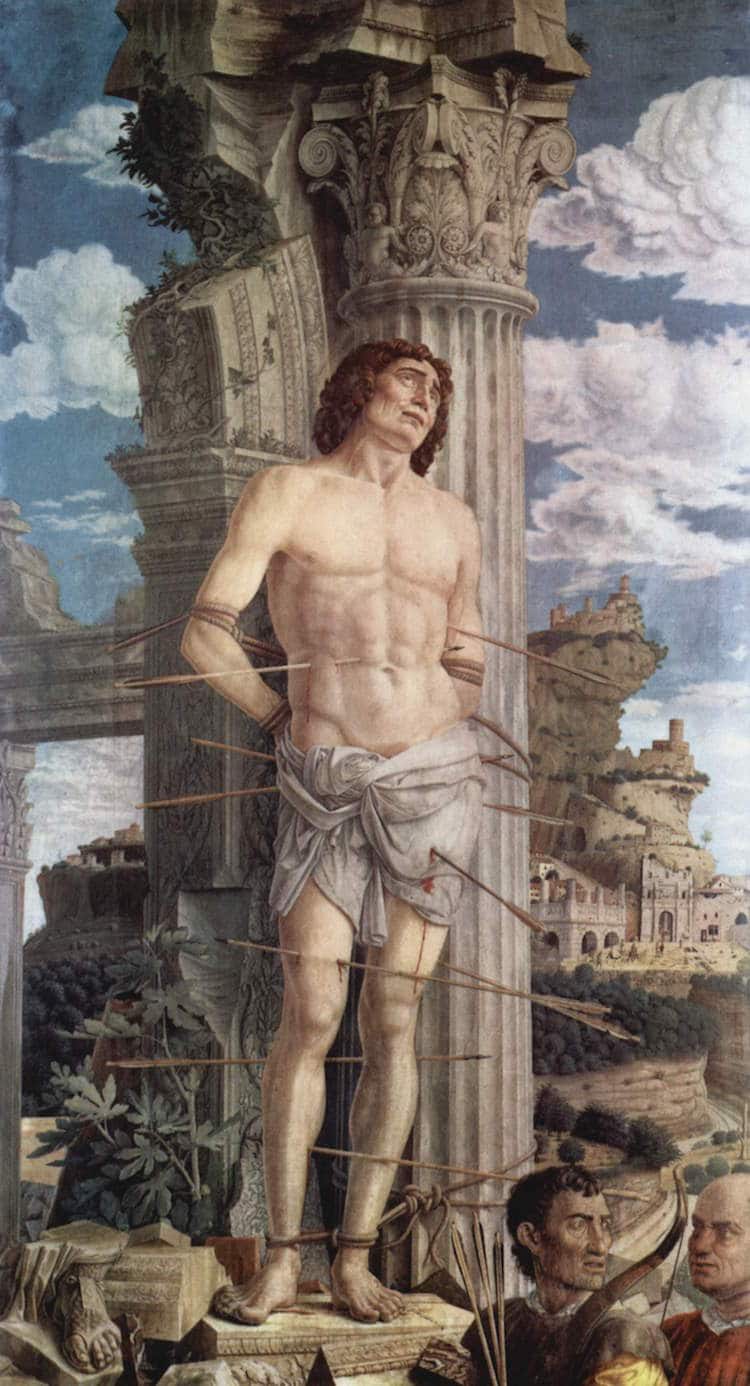
“St. Sebastian” (panel) by Andrea Mantagna (1480). (Photo: Andrea Mantegna, Public domain, via Wikimedia Commons)
Sadly, Kahlo passed away in 1954 from pulmonary embolism at her beloved la Casa Azul (the Blue House) in Mexico City, which today is home to the Frida Kahlo Museum. Thanks to her highly personal approach to art, however, her innermost emotions and admirable imagination are perpetually preserved in a captivating collection of works.
This article has been edited and updated.
Related Articles:
Rare Photos of Frida Kahlo as a Young Woman in the 1920s
Art History Masterpieces Reimagined as Hand-Sewn Embroidery
Adorable Frida Kahlo Action Figure Features Iconic Unibrow and Detachable Heart
Iconic Artists Who Have Immortalized Themselves Through Famous Self-Portraits
















































































